Abstract
The dielectric constant of natural tendon in the frequency range of 200 Hz to 100 kHz has been determined as a function of temperature (300-450°K) for water concentrations ranging from about 6 to 16% by weight. The results compare well with the approach taken by Haggis and his coworkers. Based on the assumption that at low concentration of water the probability of water-water bonding is small and hence may be disregarded, a structure for water in the collagen matrix is proposed in which the water is either bonded in one of four possible states to the polar groups of the polypeptide chains, or is unbound. In determining the distribution of the water among these states an approach similar to that of Haggis and his co-workers, in conjunction with the order-disorder theory of Bragg and Williams, is used. The number of water molecules per unit volume is then determined experimentally by relating it to weight loss as a function of temperature, as determined by thermogravimetric analysis. The dispersion which is normally found in dipolar substances has not been found for tendon. A maximum in the value of the dielectric constant is observed to occur between 25 and 80°C, the temperature depending upon the heating rate.
Full text
PDF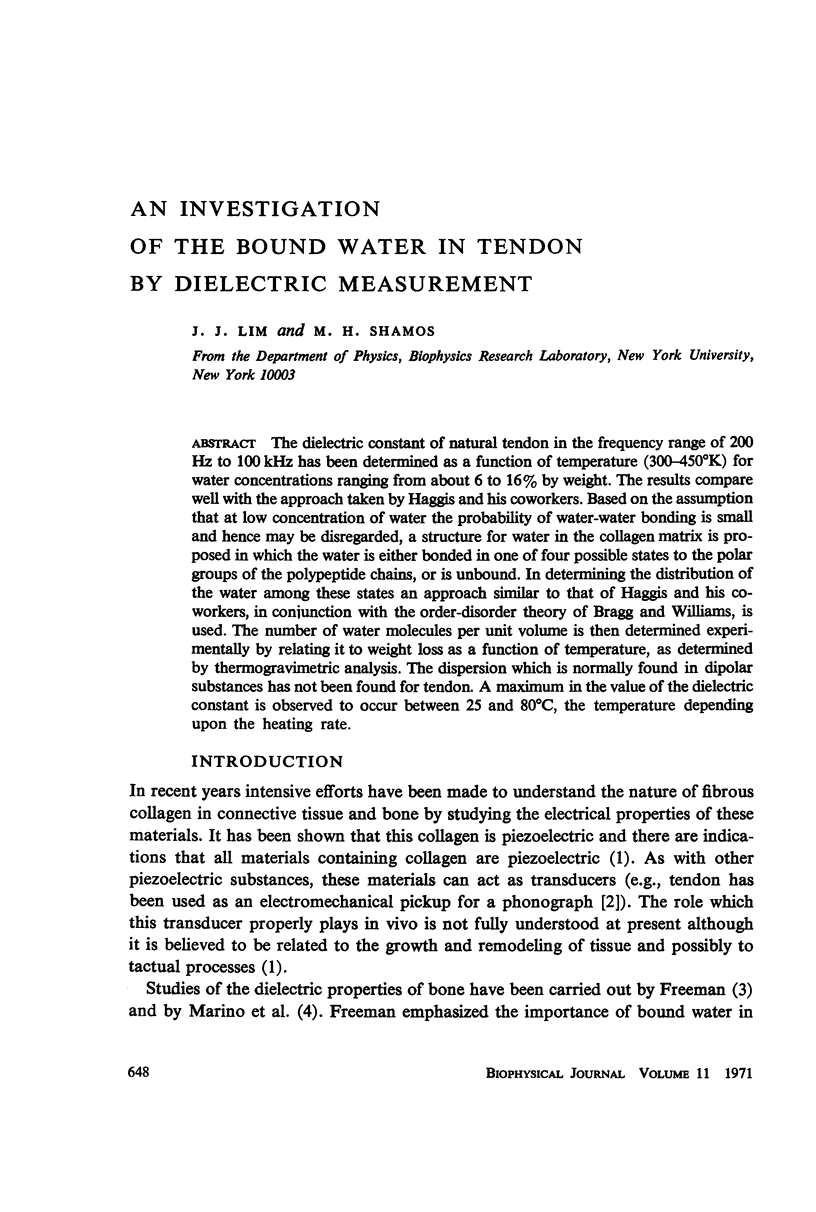
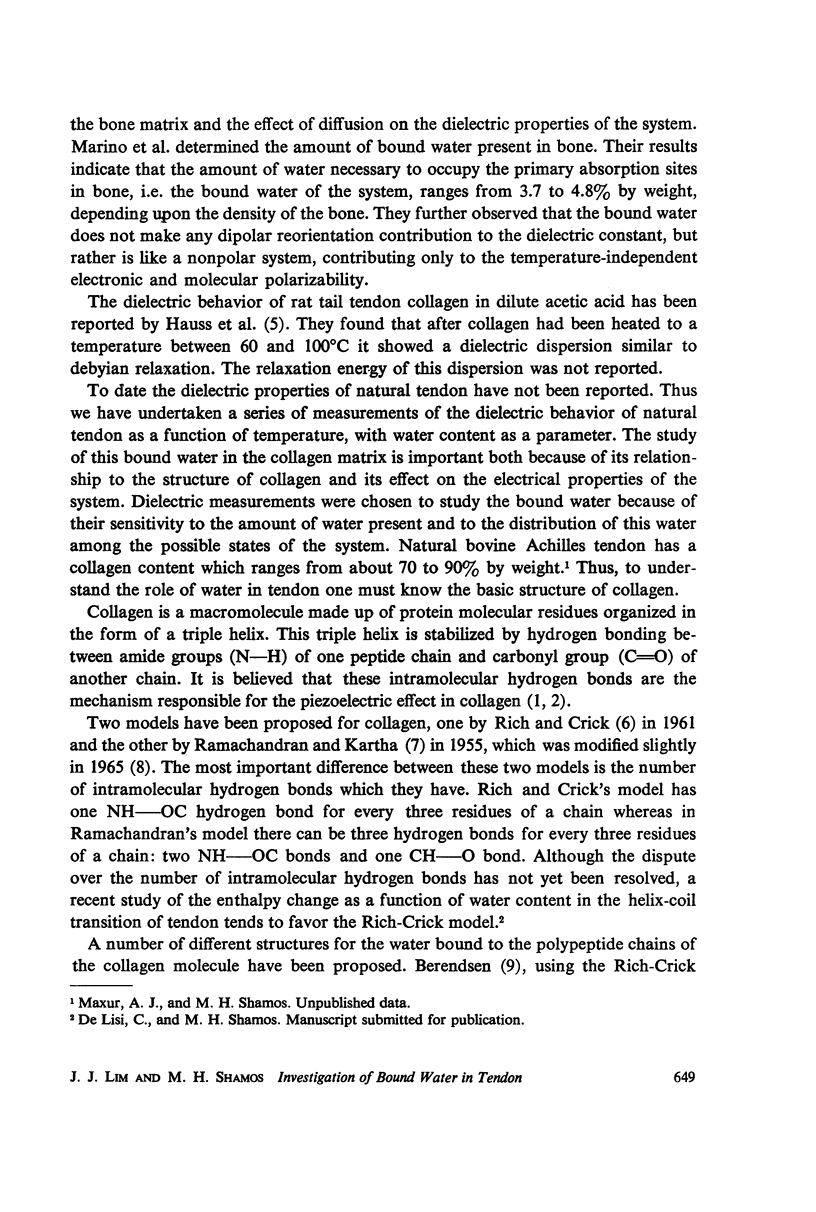
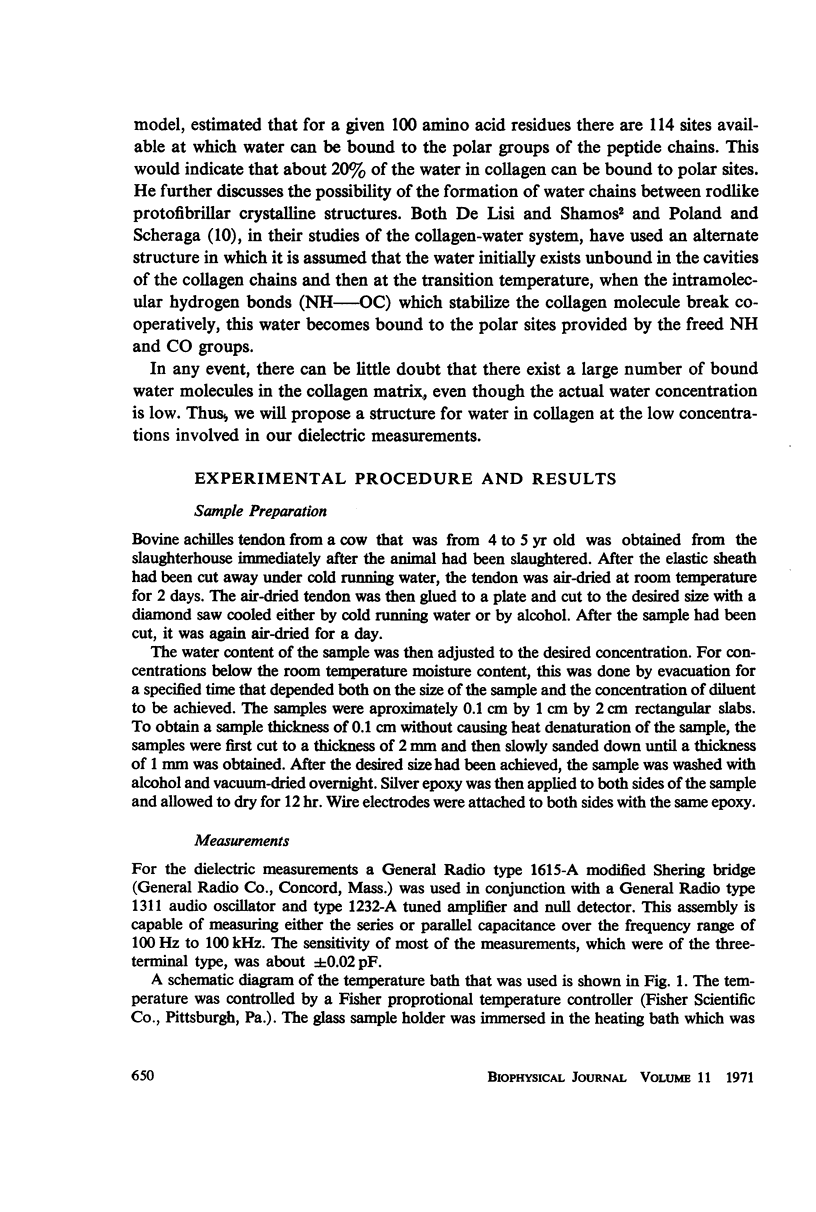
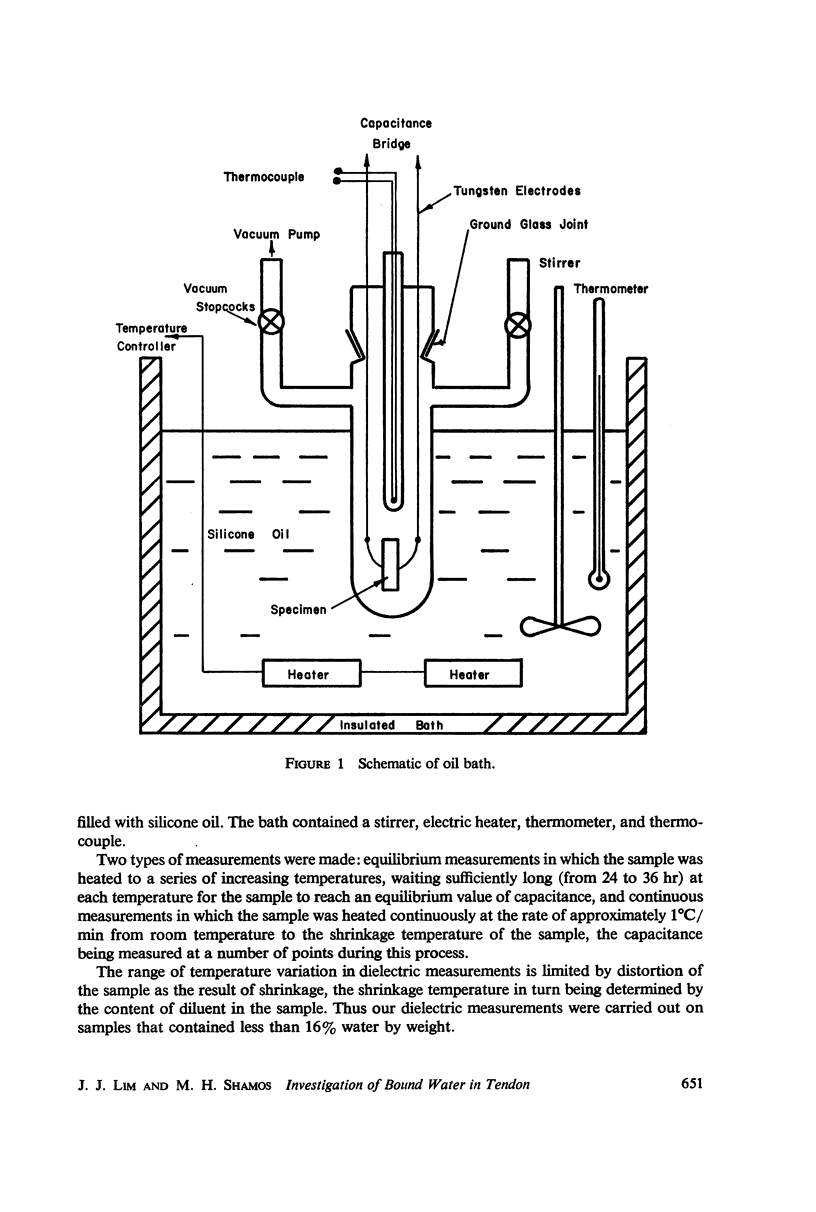
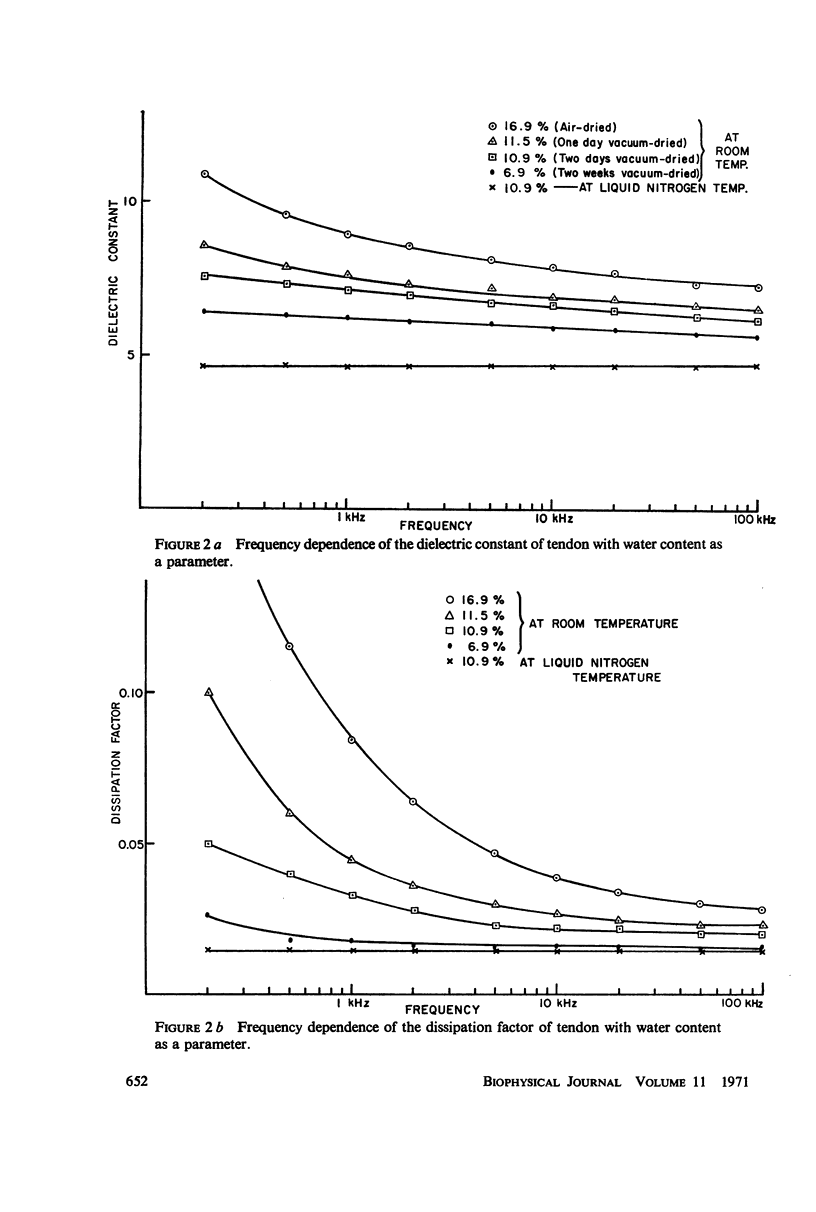
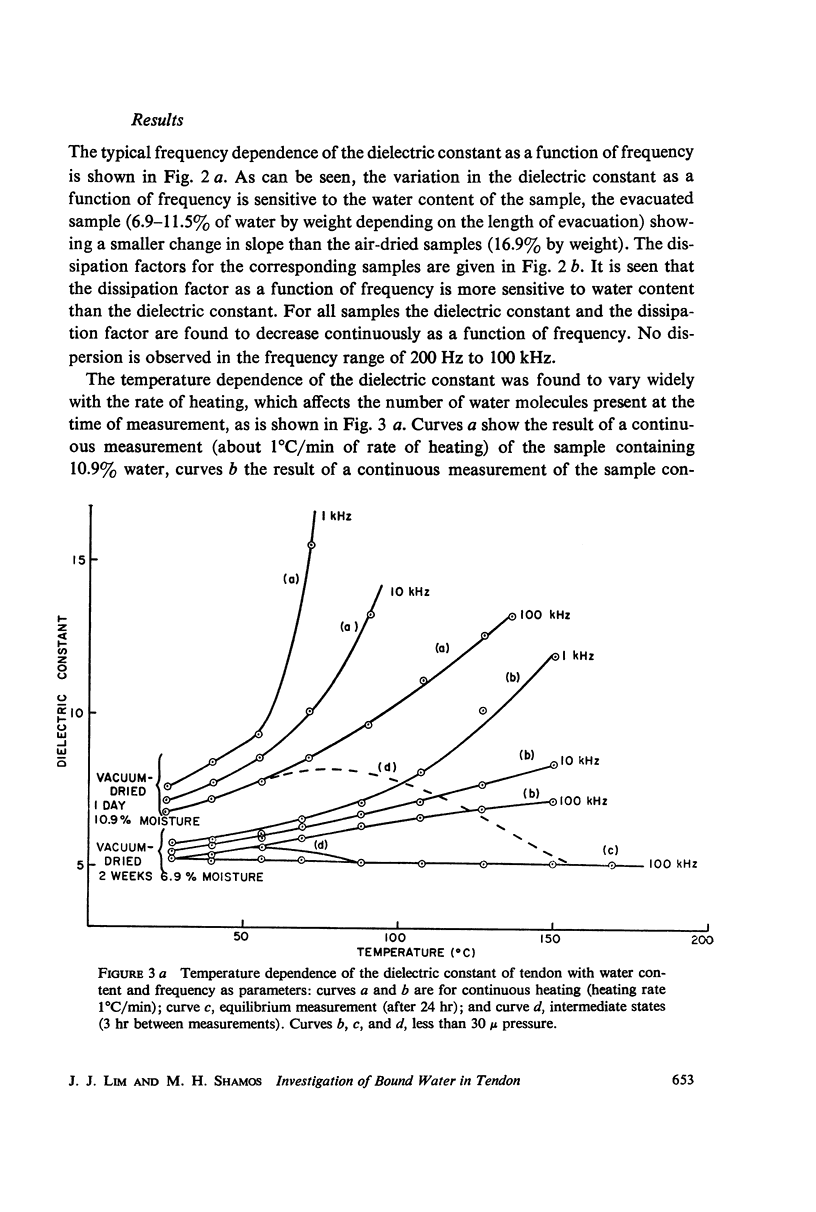
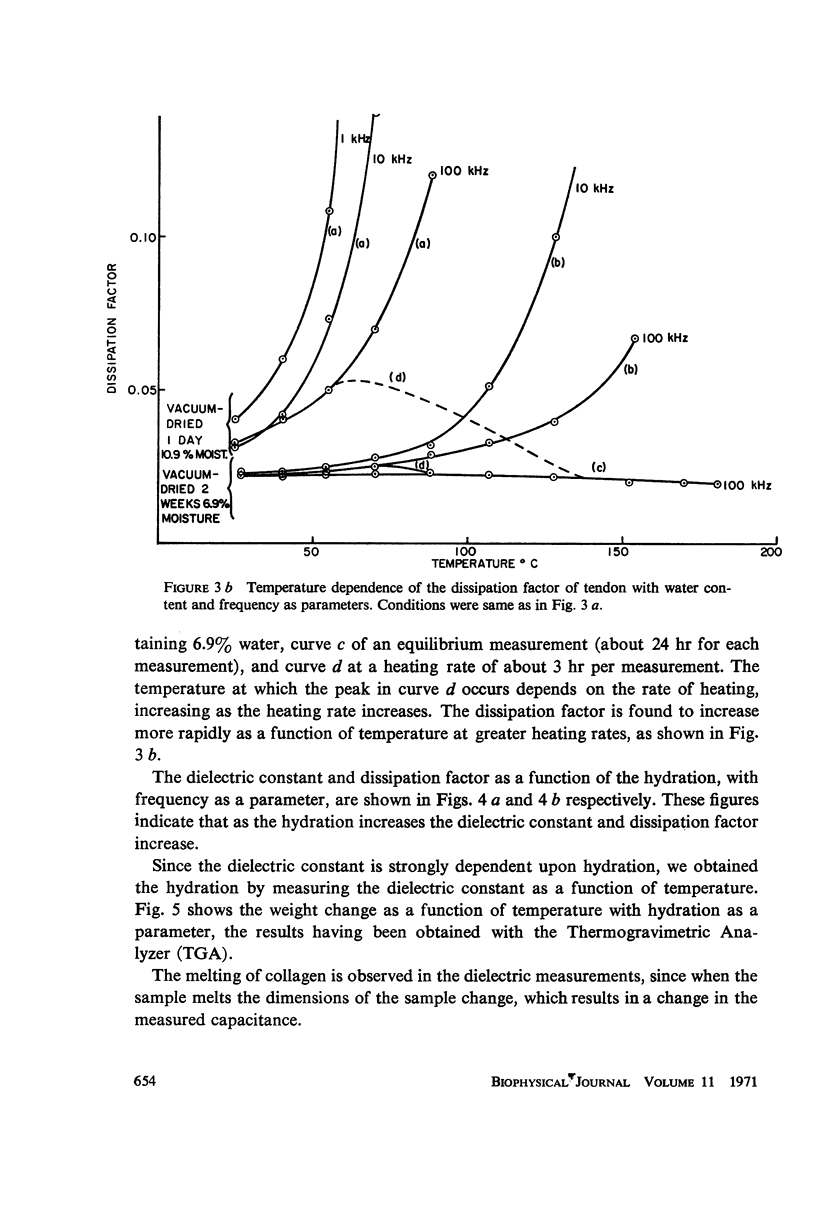
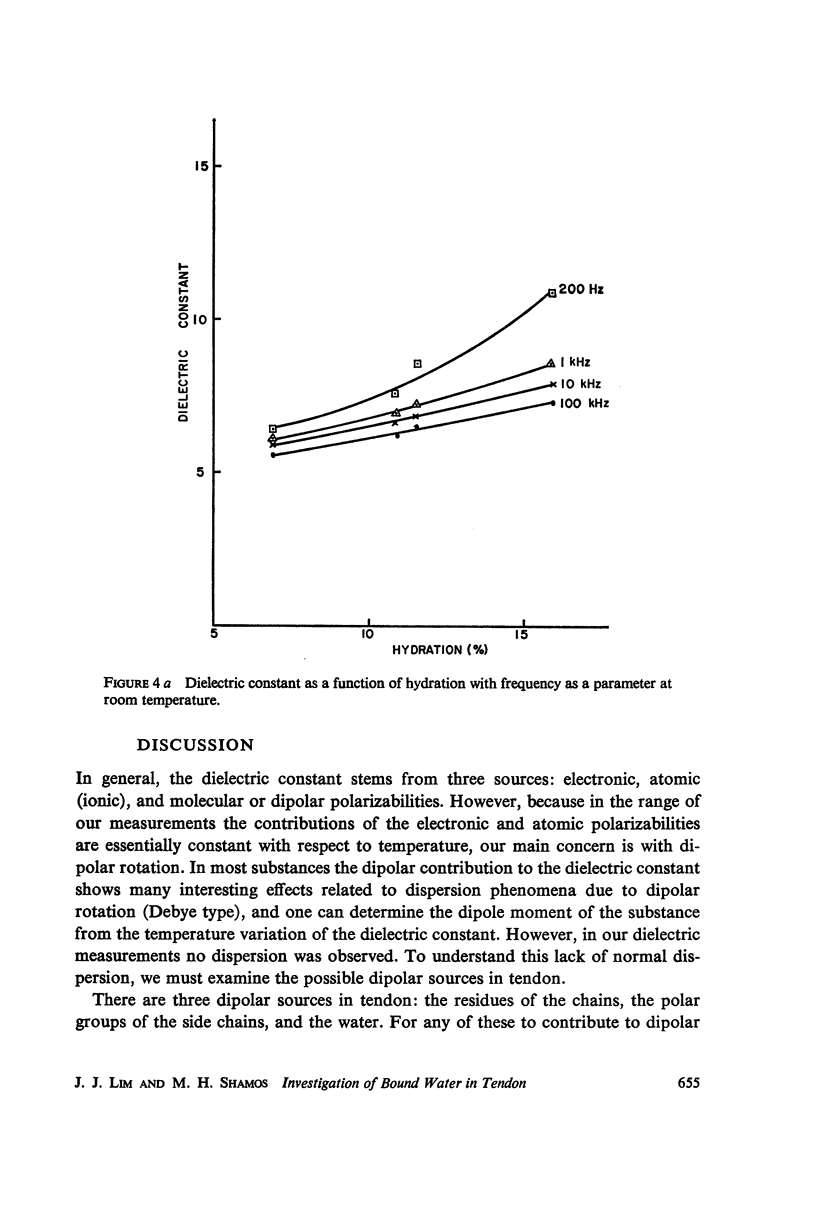
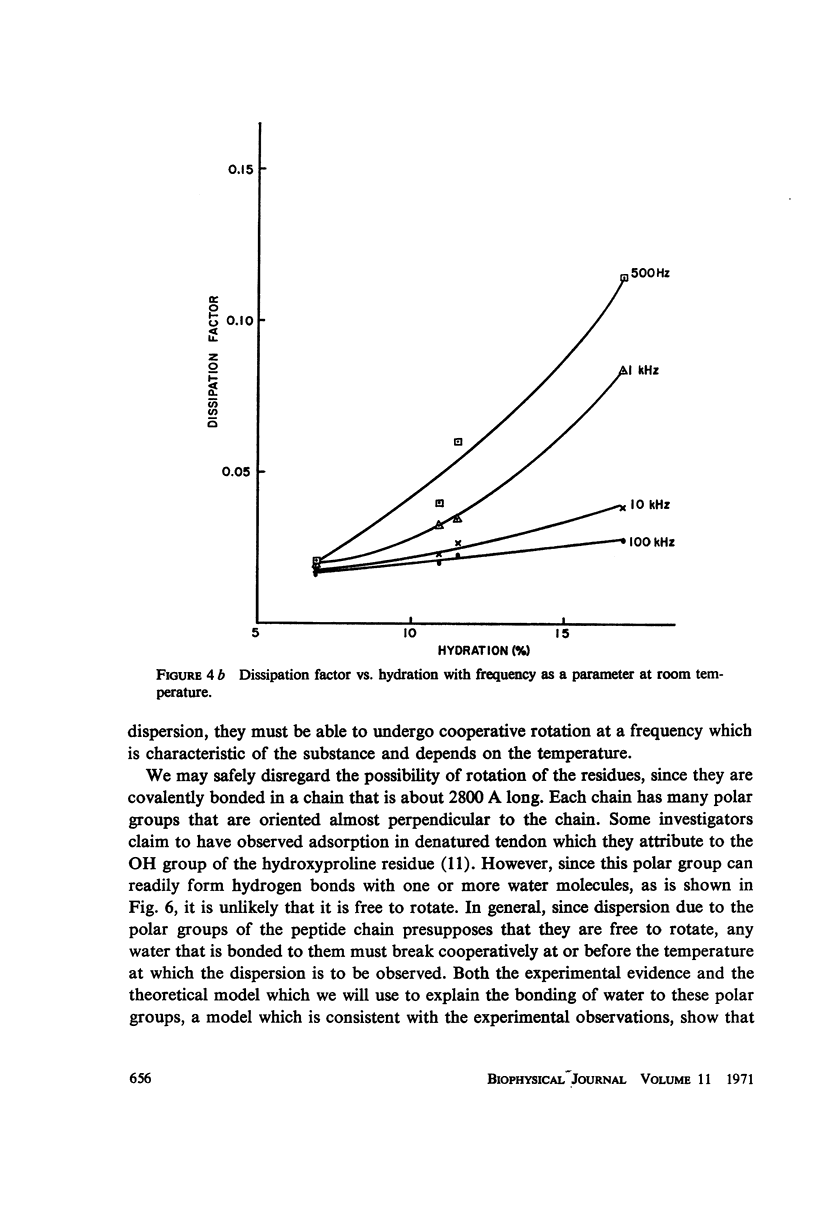
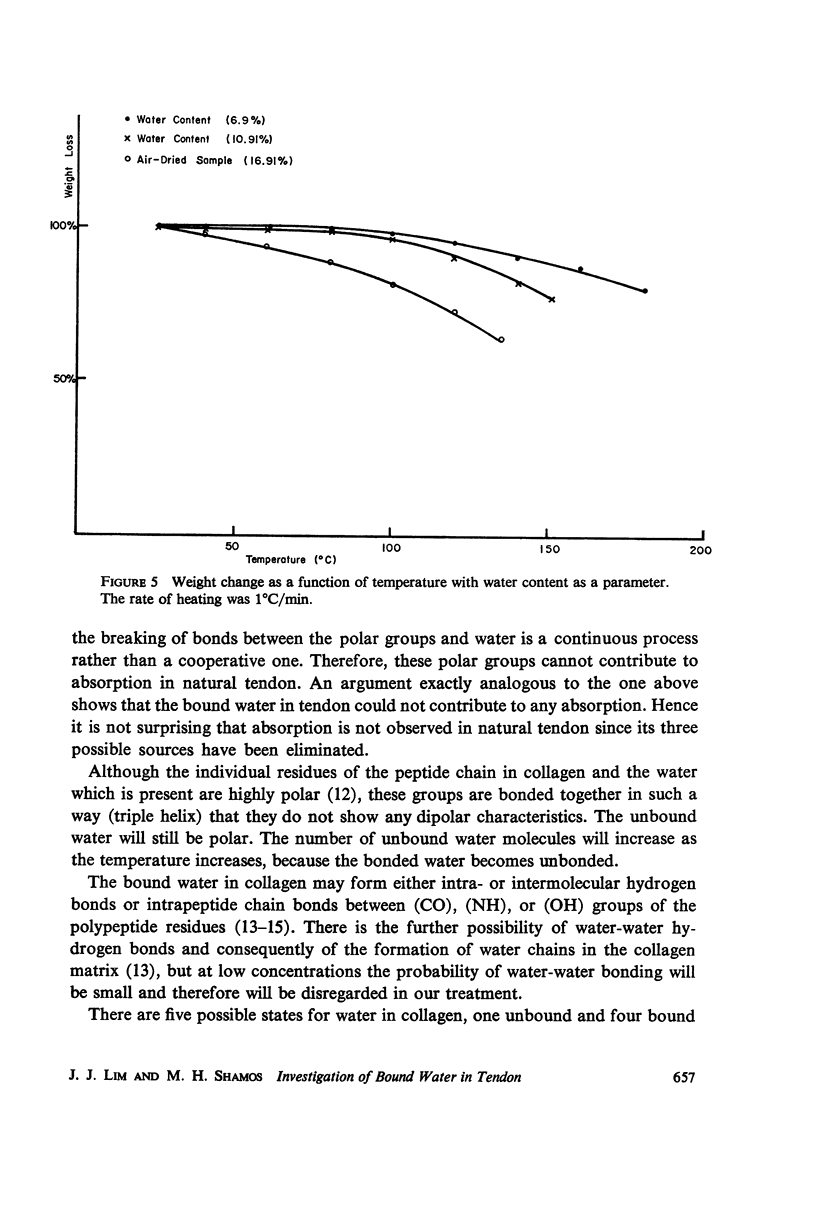
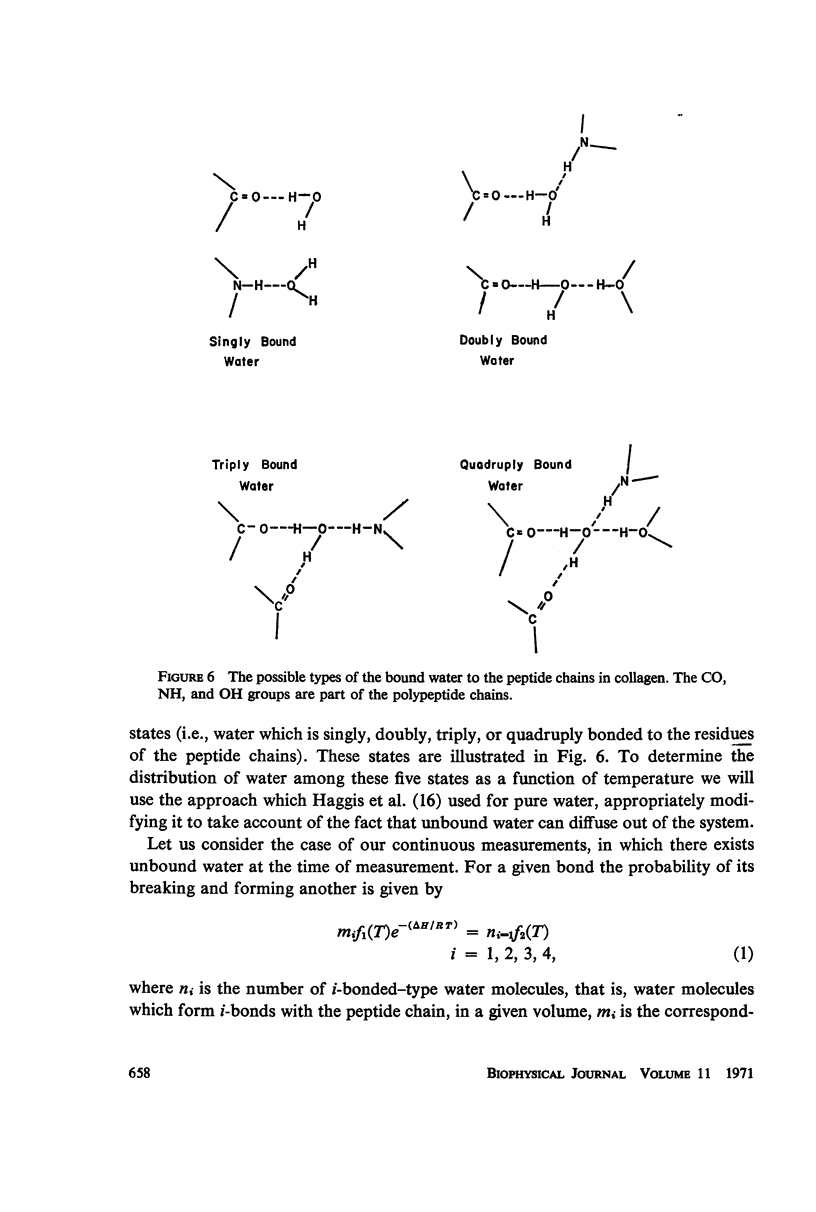
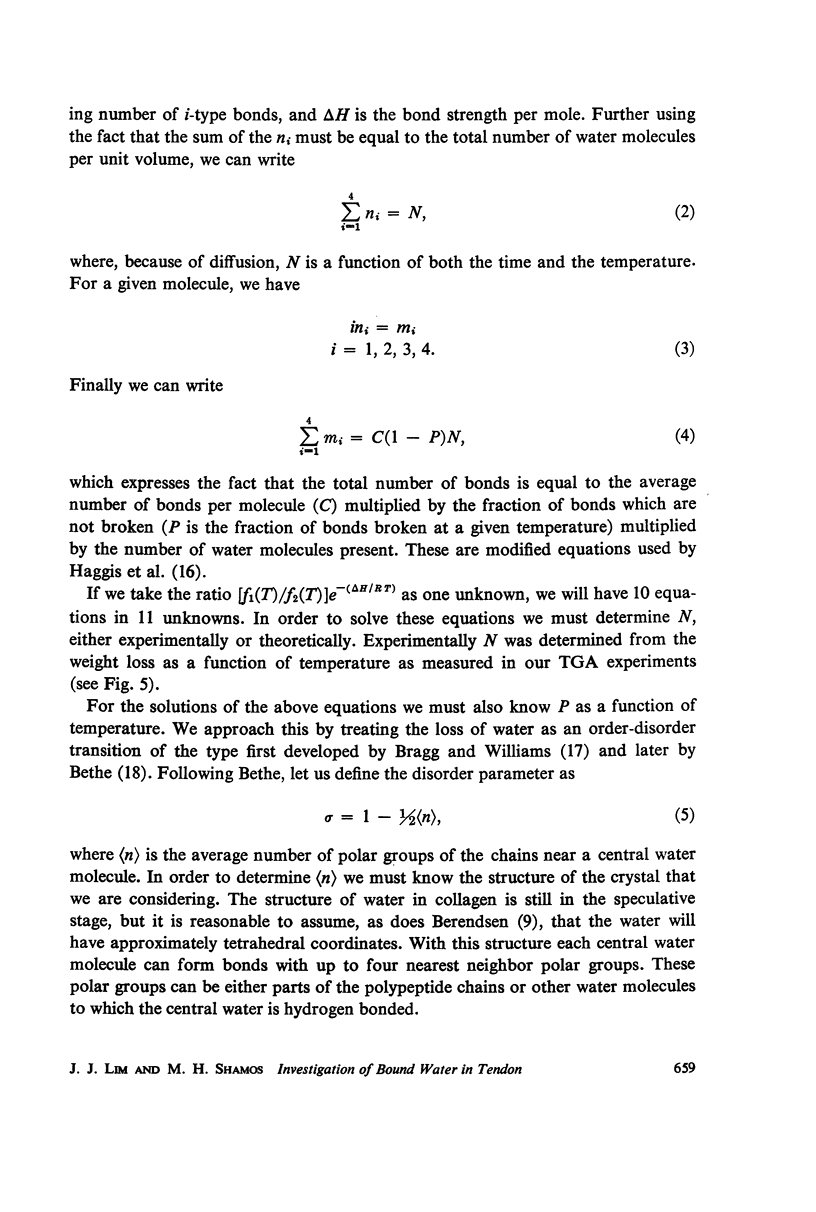
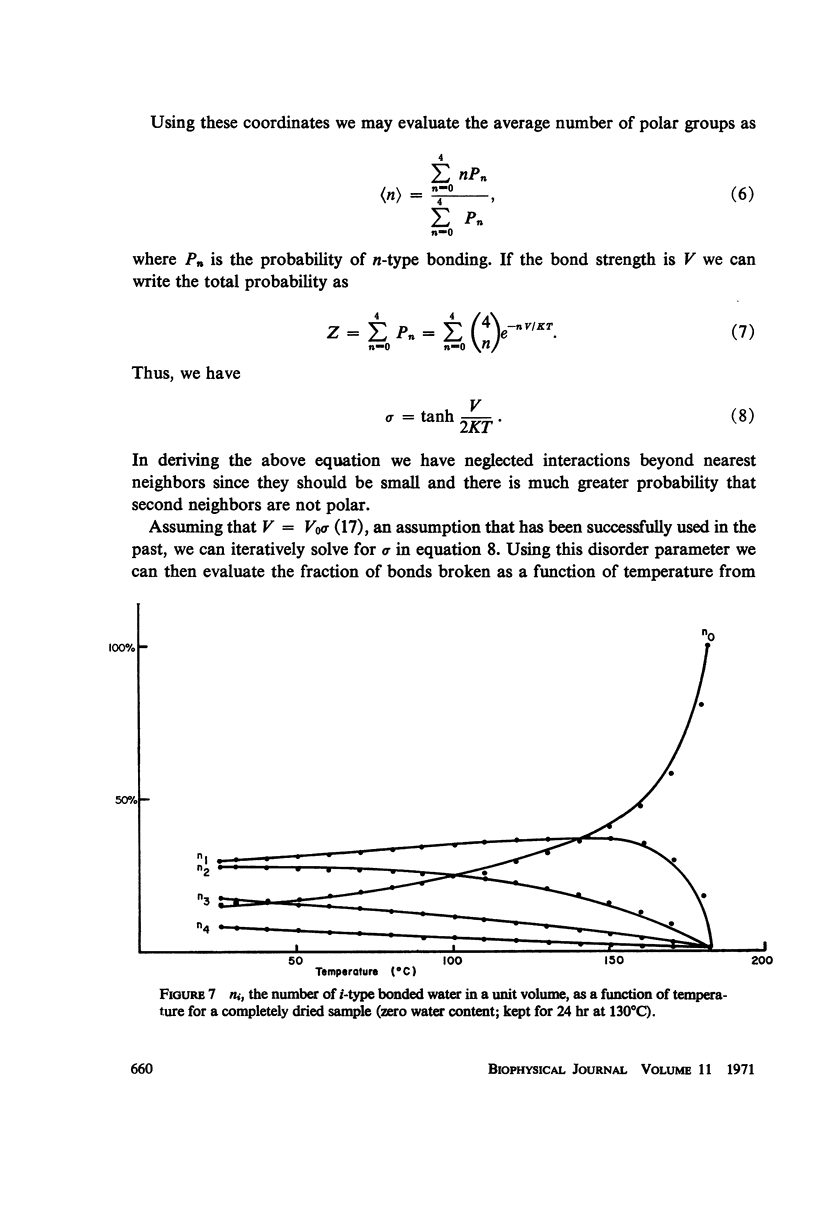
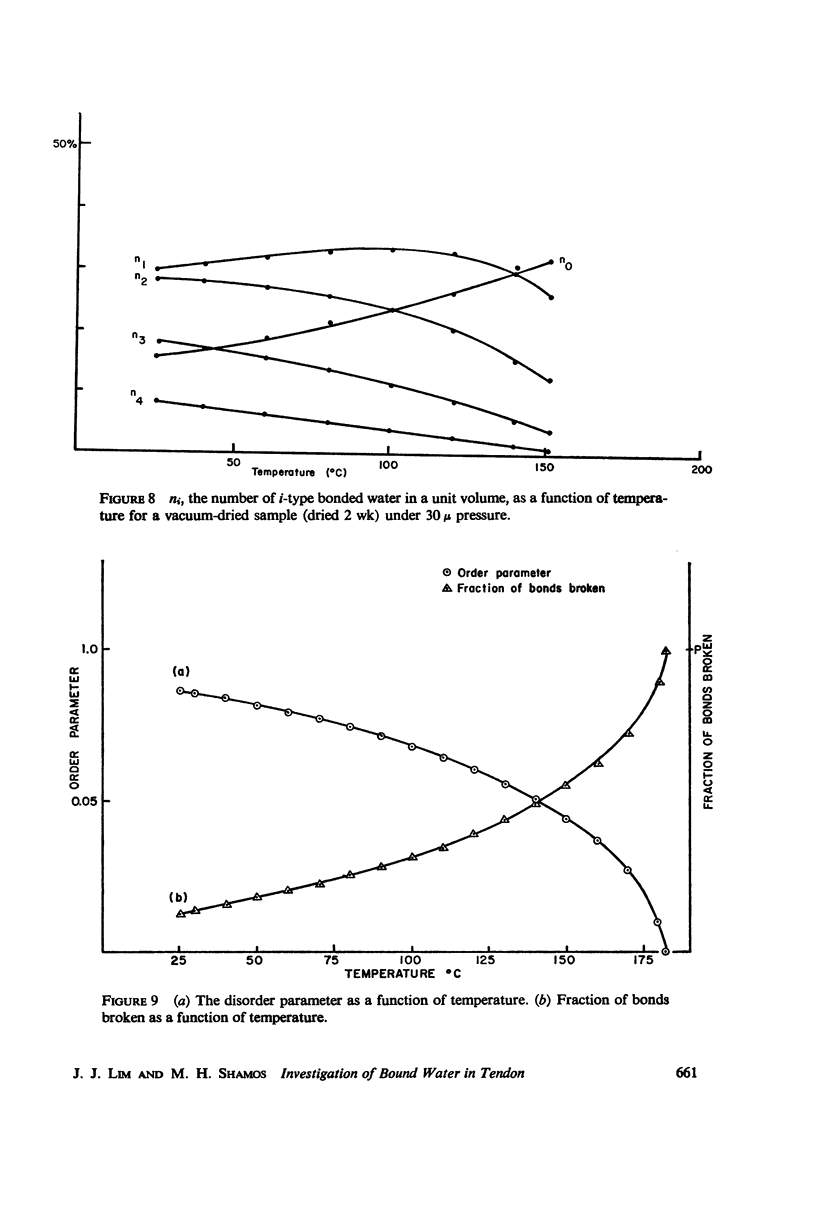
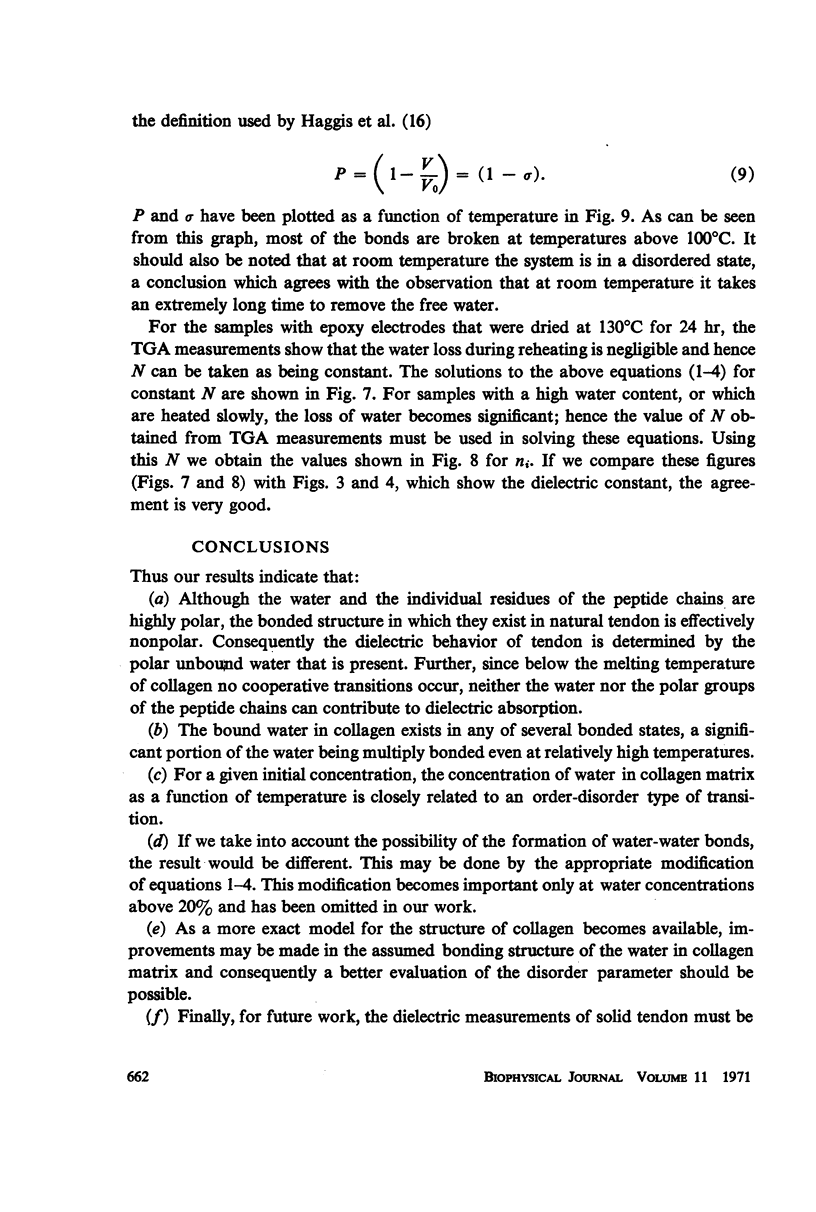
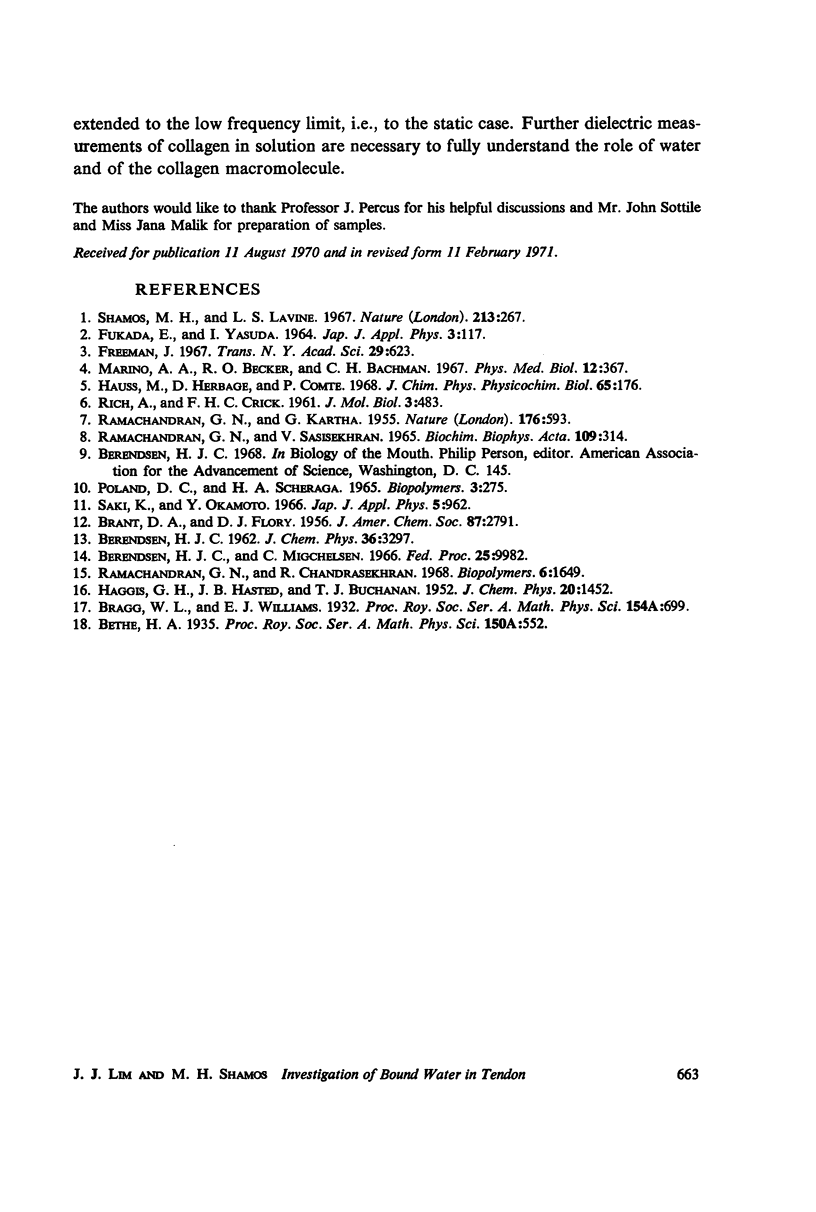
Selected References
These references are in PubMed. This may not be the complete list of references from this article.
- Freeman J. R. Dielectric properties of mineralized tissues. Trans N Y Acad Sci. 1967 Mar;29(5):623–633. doi: 10.1111/j.2164-0947.1967.tb02432.x. [DOI] [PubMed] [Google Scholar]
- Marino A. A., Becker R. O., Bachman C. H. Dielectric determination of bound water of bone. Phys Med Biol. 1967 Jul;12(3):367–378. doi: 10.1088/0031-9155/12/3/309. [DOI] [PubMed] [Google Scholar]
- RAMACHANDRAN G. N., KARTHA G. Structure of collagen. Nature. 1955 Sep 24;176(4482):593–595. doi: 10.1038/176593a0. [DOI] [PubMed] [Google Scholar]
- RICH A., CRICK F. H. The molecular structure of collagen. J Mol Biol. 1961 Oct;3:483–506. doi: 10.1016/s0022-2836(61)80016-8. [DOI] [PubMed] [Google Scholar]
- Ramachandran G. N., Chandrasekharan R. Interchain hydrogen bonds via bound water molecules in the collagen triple helix. Biopolymers. 1968;6(11):1649–1658. doi: 10.1002/bip.1968.360061109. [DOI] [PubMed] [Google Scholar]
- Ramachandran G. N., Sasisekharan V. Refinement of the structure of collagen. Biochim Biophys Acta. 1965 Sep 27;109(1):314–316. doi: 10.1016/0926-6585(65)90119-6. [DOI] [PubMed] [Google Scholar]
- Shamos M. H., Lavine L. S. Piezoelectricity as a fundamental property of biological tissues. Nature. 1967 Jan 21;213(5073):267–269. doi: 10.1038/213267a0. [DOI] [PubMed] [Google Scholar]


